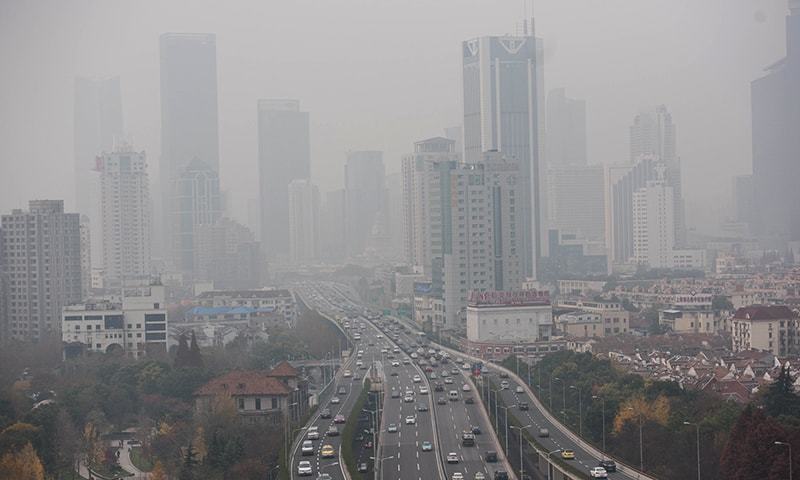Shanghai struggles with hazardous air quality as pollution peaks in mid-October

Hazardous smog hits Shanghai as China’s bad air spreads
Shanghai is grappling with dangerously high air pollution levels this week, as the Air Quality Index (AQI) surged into the “hazardous” category, sparking widespread health concerns and renewed scrutiny of the city’s environmental policies.
According to real-time air quality monitoring, fine particulate matter (PM2.5) concentrations have reached levels considered extremely unhealthy, especially for sensitive groups such as children, the elderly, and individuals with pre-existing respiratory or cardiovascular conditions.
PM2.5 refers to inhalable pollutant particles with diameters smaller than 2.5 micrometers—approximately 30 times smaller than the width of a human hair. These microscopic particles are particularly dangerous as they can penetrate deep into the lungs and even enter the bloodstream. Prolonged exposure has been linked to serious health outcomes including aggravated asthma, chronic bronchitis, and increased risk of heart disease.
Residents have reported symptoms such as throat irritation, persistent coughing, and difficulty breathing, prompting health officials to urge the public to minimize outdoor activities, especially during peak pollution hours. Sensitive individuals are advised to remain indoors, use air purifiers, and wear certified masks if outdoor travel is unavoidable.
In addition to PM2.5, elevated levels of nitrogen dioxide (NO₂) and ground-level ozone (O₃) are compounding the health risks. Nitrogen dioxide, primarily produced by vehicular emissions and industrial activity, is known to irritate airways and exacerbate respiratory diseases. Ground-level ozone, a secondary pollutant formed through chemical reactions in sunlight, can cause headaches, throat discomfort, chest pain, and worsened lung function.
Environmental experts point to a combination of seasonal weather patterns, stagnant air masses, and high emissions from traffic and nearby industrial regions as contributing factors to the recent pollution spike. While Shanghai has made strides in reducing emissions in recent years—through measures such as stricter vehicle emissions standards and the promotion of clean energy—rapid urbanization and heavy industrial activity continue to pose significant challenges.
“Shanghai’s pollution levels this week are a stark reminder that air quality remains a critical issue,” said Dr. Lin Wei, an environmental health specialist at Fudan University. “Long-term exposure to hazardous air can shorten life expectancy and contribute to a wide range of chronic illnesses.”
City officials have issued public health advisories and are reportedly considering temporary restrictions on industrial production and vehicular traffic to help curb pollution levels. However, experts emphasize that sustained improvements will require structural changes and coordinated regional efforts.
Shanghai’s struggle mirrors those of many megacities around the world facing the dual pressures of economic growth and environmental sustainability. As air quality fluctuates daily and pollution levels shift globally, the need for stronger international cooperation on climate and pollution control grows ever more urgent.
While the city has not consistently held the top position in global pollution rankings, recent reports from mid-October place Shanghai among the most polluted major urban centers worldwide.
Shanghai Issues Yellow Alert as Smog Worsens:
Thick smog has blanketed Shanghai, prompting authorities to issue a “yellow alert”—the third-highest level of warning. Residents, especially the elderly, children, and those with health conditions, have been advised to stay indoors, limit outdoor activities, and keep windows shut to minimize exposure.
Air pollution continues to plague China nationwide, with environmental degradation evident not just in the air, but also in water and soil. Rivers and lakes are increasingly choked with garbage, while industrial pollution has left harmful heavy metals in the soil.
The poor air quality has even disrupted transportation, with flight delays becoming more common due to low visibility caused by the smog.
Meanwhile, provinces in northern China have begun tightening environmental regulations on heavy industries such as steel and cement. As a result, many manufacturers are shifting production southward—adding to the pollution burden in cities like Shanghai.
Read More News On
Catch all the Business News, Breaking News Event and Latest News Updates on The BOL News
Download The BOL News App to get the Daily News Update & Live News.